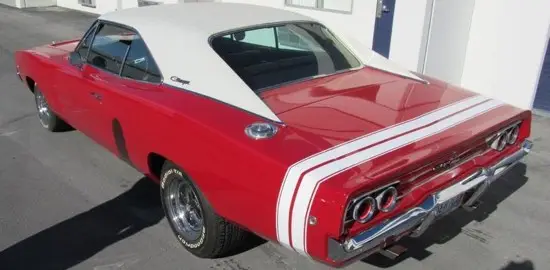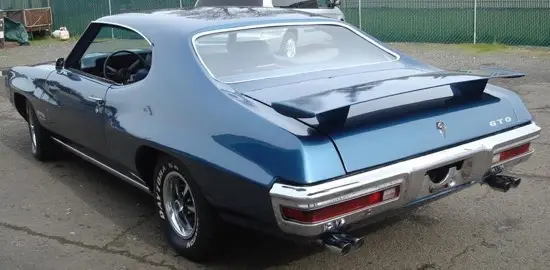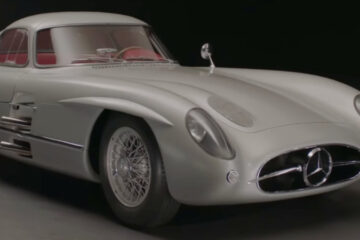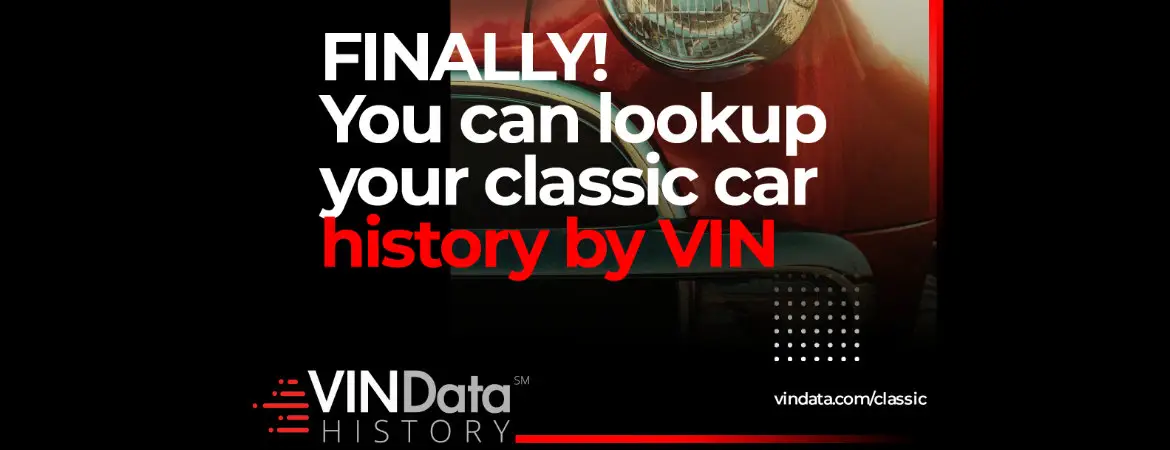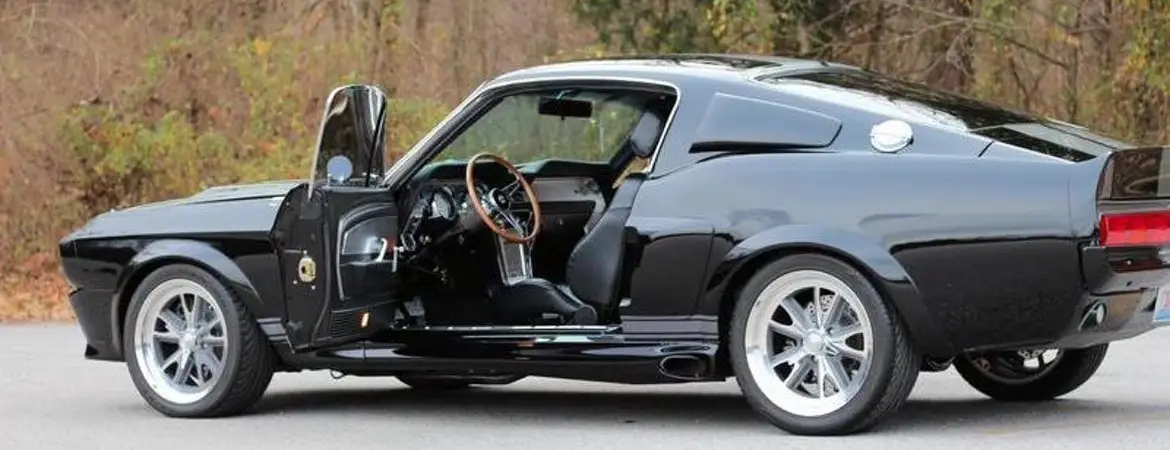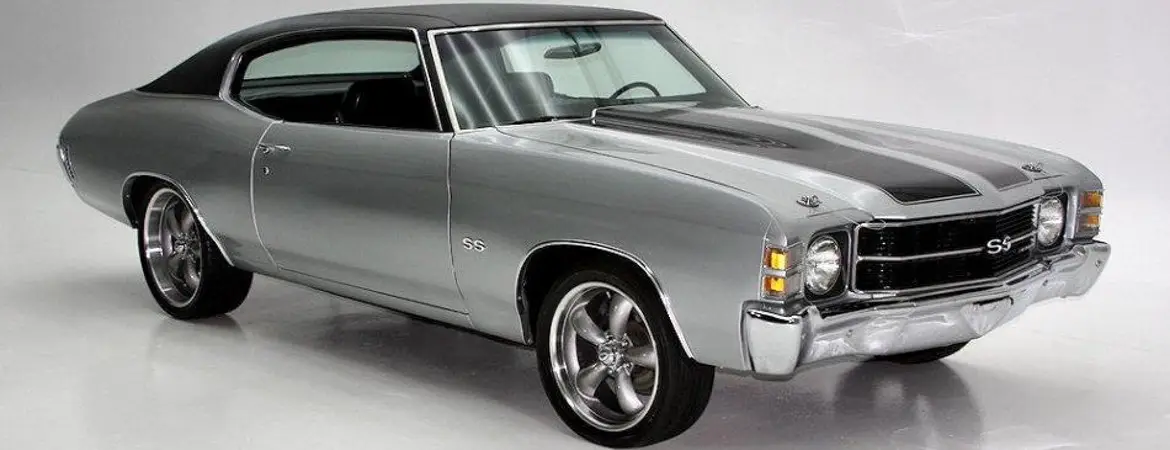
Classic Muscle Cars vs the Modern World
To those in the Boomer generation, the term “Muscle Cars” conjures up memories of big displacement engines produced by the Detroit OEM’s, formerly known as The Big Three (GM, Ford & Chrysler). “There’s no replacement for displacement” was the mantra back in the day. That was before the Japanese and German invasion in the 1960’s with offerings from Daimler, BMW, VW, Audi, Toyota, Nissan and many others.
Volkswagen’s beetle made a huge, post WWII impact on the US auto market beginning in the late 50’s that began the trend toward fuel efficient, small displacement engines. Sixty years later, Japan and Germany have been joined by Korea in the hunt for the US consumer, and are taking increasingly larger bites of the market share pie. Today, small displacement, turbocharged, computer controlled, 4 and 6 cylinder powertrains offer performance on a scale unimaginable in the ‘60’s, and they dominate the market.
The relative inefficiency of a 60’s era Ford 427 Side Oiler V8, mated with a toploader four speed manual transmission, stands in stark contrast to a two liter, four banger with 500 HP. High horsepower, all-wheel-drive, and paddle shifters are commonly found in current offerings from US, German and Japanese manufacturers. Today’s performance cars are far superior to those built 50+ years ago, but that’s to be expected after half a century of technological advancements.
The Appeal of Muscle Cars
The beauty of American Muscle Cars is their emotional appeal. Beyond the timeless lines of a ‘67 Mustang fastback, or a “split-window” 1963 Corvette Stingray, most enthusiasts find the exhaust note from a well-tuned V8 preferable to a 4 cylinder Honda with a fart pipe. Or, to paraphrase a racing cliché, “it’s not how well you go fast, it’s how you look and sound when you do.”
Most of us have an idea of what a muscle car is, but maybe we’re unsure of the exact models that meet the criteria. The term is often loosely applied to most 1960 and 1970’s classic cars that were optioned from the factory with big engines, more horsepower and typically a 4 speed manual transmission.
What Defines a Muscle Car?
First of all, the term “American muscle cars” is superfluous. All official muscle cars are American made. It’s possible you’ve heard of Australian muscle cars or even Latin American, but these are cars manufactured abroad by the Detroit Three.
Muscle cars come in a 2 door, family style package with a V8 engine. These cars are ideal for street use, and also the occasional drag race. The muscle car is quite different from European high performance cars and the Shelby Cobra. While the European cars were designed with agility, the muscle cars were designed to get up and go. Drag races became popular with the help of several successful films including 1957’s Rebel Without A Cause. It wasn’t until the mid 60’s though, that muscle cars began their popular stride. The interest would continue until the 1973 oil crisis and subsequent regulations.
What Was the First Muscle Car?
Though opinions of when the muscle car era began vary, the 1949 Oldsmobile Rocket 88 is often cited as the first muscle car, closely followed by the Hudson Hornet. Chrysler then came out with the 1955 C-100. The C-100 stood out from the crowd. Not only was it fast, it possessed unmatched handling. Chrysler advertised it as “America’s Most Powerful Car”.
The original muscle cars boasted 135hp – not much by today’s standards. But by 1970, muscle cars were producing up to 450hp. Variations within the model were commonplace, as each manufacturer offered several upgrade options. Ordering your muscle car and tailoring it to your desire was a big draw among customers. Before long, muscle trucks were introduced. Leading car companies came out with models such as the Ford Ranchero, GMC Sprint and the Chevy El Camino, all available with big block performance options.
How Do Modern Muscle Cars Compare to the Classics?
Muscle cars have been periodically revived, like the 2004 Pontiac GTO and the 2008 Dodge Challenger, but none have been able to sustain the fame of the originals. Certain classic cars, as well as original muscle cars, continue to be well sought after investment opportunities. They have a long-term track record of appreciation, outperforming many other investments. They perform well, both as weekend toys and as an appreciating asset, much like art, antiques, and other historical artifacts.
For example, if you had purchased a 1965 Shelby Cobra when it was new, and sold it 50 years later, you would have realized an annual rate of return of just over 9%.
Besides, you can’t drive a mutual fund.
Check out our muscle car list below:
LIST OF MUSCLE CARS (USA)
- 1962–1965 Dodge Dart 413/426 Max Wedge/426 Hemi
- 1962–1965 Plymouth Fury 413/426 Max Wedge/426 Hemi
- 1964–1965 Ford Thunderbolt 427
- 1965–1972 Buick Skylark GSX/GS400/GS
- 1965–1970 Dodge Coronet 426-S
- 1965–1970 Plymouth Belvedere 426-S
- 1965-1983 Chevrolet Malibu SS 2 Door Sport Coupe
- 1965–1967 Oldsmobile Cutlass 442
- 1964–1965 Pontiac Tempest
- 1964–1965 Pontiac Le Mans
- 1964–1965 Pontiac GTO
- 1965–1975 Buick Riviera Gran Sport
- 1965–1969 Buick Skylark Gran Sport
- 1965–1970 Dodge Coronet 426-S
- 1965–1970 Plymouth Belvedere 426-S
- 1965–1967 Oldsmobile Cutlass 442
- 1966–1971 Plymouth/Dodge intermediates with 426 Hemi
- 1966–1967 Chevy II SS327
- 1966–1969 Chevrolet Chevelle SS396
- 1968–1969 Chevy II Nova SS396
- Ford Torino Cobra 428
- Plymouth Road Runner 440 Six Pack
- Dodge Super Bee 440 Six Pack
- Chevrolet Chevelle SS454
- Pontiac GTO
- 1984–1987 Buick Grand National
- 1970–1987 Chevrolet Monte Carlo SS
Full-size muscle models
- 1965–1970 Buick Wildcat
- 1966–1973 Buick Riviera GS & GS Stage One
- 1965–1974 Chevrolet Impala SS & Custom Coupe
- 1965–1974 Chevrolet Bel Air
- 1965-1974 Chevrolet Biscayne
- 1965-1974 Chevrolet Caprice
- 1965–1971 Chrysler 300 non-letter series
- 1965–1973 Dodge Polara Super-Lite
- 1965–1974 Ford Galaxie
- 1966–1967 Mercury S-55
- 1969–1970 Mercury Marauder
- 1965–1966 Oldsmobile Starfire
- 1964–1965 Oldsmobile Jetstar I
- 1969–1974 Plymouth Fury GT
- 1966–1969 Pontiac Ventura
- 1964–1972 Pontiac Grand Prix SJ
Mid-size muscle models
- 1967–1970 AMC Rebel
- 1970 AMC Rebel Machine
- 1971 AMC Matador Machine
- 1965–1972 Buick Skylark Grand Sport & Buick GSX
- 1965–1973 Chevrolet Chevelle SS
- 1966–1974 Dodge Charger 500, R/T & SE
- 1968–1971 Dodge Super Bee
- 1969 Dodge Charger Daytona
- 1966–1969 Ford Fairlane GT, GTA & Cobra
- 1968–1974 Ford Torino GT, Cobra & Talladega
- 1966–1972 Mercury Cyclone GT, Cobra Jet & Spoiler II
- 1968–1973 Mercury Montego GT & MX Broughan
- 1968–1972 Oldsmobile 4-4-2
- 1968–1972 Oldsmobile Cutlass SX, Supreme & Hurst/Olds
- 1967–1971 Plymouth GTX
- 1968–1974 Plymouth Road Runner
- 1970 Plymouth Superbird
- 1964–1973 Pontiac GTO
- 1968–1970 Pontiac Tempest GT-37
- 1973–1975 Pontiac Grand Am
Compact muscle models
- 1969 AMC SC/Rambler
- 1971 AMC Hornet SC 360
- 1972–1976 AMC Gremlin V8
- 1966–1974 Chevrolet Nova SS
- 1967–1976 Dodge Dart GT, GTS, Swinger & Demon
- 1970–1976 Plymouth Duster Gold Duster & Twister
- 1966–1979 Ford Falcon Sports Coupe
- 1970–1975 Ford Maverick Grabber
- 1971–1975 Mercury Comet GT
- 1973–1974 Oldsmobile Omega S
- 1973–1974 Buick Apollo GSX
- 1974 Pontiac GTO
- 1966-1969 Rambler Rogue V8
Pony car muscle models
- 1968–1970 AMC AMX
- 1968–1974 AMC Javelin SST
- 1967–1974 Chevrolet Camaro RS, Z/28 & SS
- 1967–1969 Yenko Camaro 427
- 1969–1974 Dodge Challenger SE, R/T & T/A
- 1964–1973 Ford Mustang Mach 1, Boss 429, Boss 302 & Boss 351
- 1965–1970 Shelby Mustang GT350 & GT500
- 1967–1973 Mercury Cougar GT, XR-7 & Eliminator
- 1967–1981 Pontiac Firebird Trans Am
Muscle trucks
- 1966–1975 Chevrolet El Camino SS
- 1967–1976 Ford Ranchero GT
- 1971–1975 GMC Sprint SP
- 1978–1979 Dodge D Series Li'l Red Express
LIST OF MUSCLE CARS (INTERNATIONAL)
AUSTRALIA
Chrysler
- 1971–1972 Charger R/T E37
- 1971–1972 Charger R/T E38
- 1972–1973 Charger R/T E48
- 1972–1973 Charger R/T E49
- 1972–1973 Charger S/E E55 727 Torqueflite Auto 340
- 1969–1971 Valiant 318/360 V8S
- 1973–1974 Charger E48
- 1973 Charger E49
- 1973–1974 Charger 770 E55
Ford
- 1967–1976 Ford Falcon GT
- 1967–1976 Ford Falcon Cobra
Holden
- 1968–1977 Holden Monaro
- 1974–1978 Holden Torana
- Leyland P76 "Force Seven"
BRAZIL
Chevrolet
- 1971–1975 Opala SS 250 I6
- 1975–1979 Opala SS 250-S I6
- 1979–1980 Opala SS 250-S I6
- 1976–1979 Caravan SS
- 1980 Caravan SS
Ford
- 1971–1975 Maverick GT 302 V8
- 1975–1979 Maverick GT 302 V8
- 1966–1971 Galaxie 500 289 V8
- 1971–1980 LTD Landau 302 V8
- 1980–1983 Landau 302 V8
Dodge
- 1969–1975 Dart 318 V8
- 1971–1979 Charger R/T 318 V8 (1969 Dart modified sold under the name of Charger)
- 1980 Charger R/T318 V8 (Modified 1976 Dart)
Puma
- 1975–1979 GTB S1
- 1980–1988 GTB S2
- 1988–1994 AMV
Santa-Matilde
- 1979–1988 SM4.1
ARGENTINA
General Motors Argentina
- 1972–1977 Chevrolet Chevy Coupé "Super Sport"
- 1967–1974 Chevrolet 400 "Super Sport"
- 1970–1974 Chevrolet 400 "Rally Sport"
Ford Motor Argentina
- 1973–1981/82 Ford Falcon "Sprint"
- 2016–Present Ford Mustang GT “Coyote”
Chrysler-Fevre Argentina S.A.
- 1970–1972 Dodge GTX “RG”
- 1972-1979 Dodge GTX “Chrysler LA”
- 1974–1979 Dodge Polara "R/T"
IKA-Renault (Industrias Kaiser Argentina)
- 1966–1970 Torino 380/380w "Tornado Interceptor 230"
- 1970–1973 Torino "GS200 "Tornado Interceptor 230"
- 1973-1976 Torino GS200 “Tornado 233”
